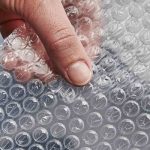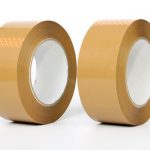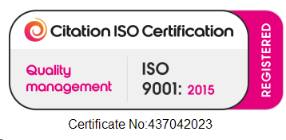Origin Of Cardboard Boxes
Chinese people invented Cardboard for the first time in the 1600s. They made a thick proto-cardboard which they used in packaging. Later in 1843, a wood grinding machine was invented in Germany; this they used to grind the wood and form pulp which could be used to make paper. Since then, manufactures started fabricating cardboard boxes. A Scottish-American Robert Blair was in 1890 to invent the pre-cut paper box. These boxes helped in shipping flat items. By 1906, the Kellogg factory used for mass-packaging of Cornflakes.
 How Are Cardboard Boxes Manufactured?
How Are Cardboard Boxes Manufactured?
The process of manufacturing cardboard boxes starts from cutting trees to fully finished boxes. Before the boxes are built, many factors such as the shape, size, strength, colour, coating and flute are taken into consideration.
A cardboard box comprises of a flute, which is made of recycled paper. And two layers of liners, which is flat paper. The flute is sandwiched between two layers of liners which are made of kraft paper.
Nowadays, even liners can be made of a considerable amount of recycled paper from old cardboard or other second-hand paper. However, using virgin kraft paper gives the top quality of boxes. As per requirements, the corrugated cardboard boxes are made of different layers of flutes and liners.
 Here is the step to step process:-
Here is the step to step process:-
Cardboard boxes have a test paper inner liner and a kraft paper outer liner. Kraft paper is used in the outer layer because it is easy to print on it, concerning its smooth finish. And also because kraft paper has more water resistance. To achieve the smooth finish kraft paper has to be made from softwood trees with long fibres. Trees such as Spruce, Pine and Fir are used. Trees from the sustainable forests of SCA are used in Europe. Kraft paper made from trees with long fibres has a high tear and burst resistance. The colour and look of the Kraft paper may vary according to the type of wood used. On the other hand, either hardwood trees with short fires or recycled paper are used to make test paper liners. Therefore they are cheaper with more abrasive quality. Trees such as Oak, Sycamore, Birch and Chestnut are used as hardwood sources.
Pulping: Logs are created by cutting and lumbering the trees. Later, the logs go through a machine and are debarked and chipped. These chips are then converted into pulp by either mechanical pulping method or chemical pulping. The mechanical pulping involves grinding. In it, the debarked logs are forced against a revolving stone to reduce the chips into pulp. This method costs less and generates a higher throughput, but results in little removal of lignin. Lignin is something that binds fibres together in the wood, but it would reduce the quality of the paper. Whereas, chemical pulping involves cooking the chips to get individual cellulose fibres. There are two types of it, using sulphite and sulphate. However, both the methods of chemical pulping are effective and result in better separation and reduces more lignin and thus increasing the quality of the paper produced.
Fluting: The wavy part in between the flat papers is the fluted cardboard. It is the element which provides the cushioning protecting it from knocks and impact damage. It also gives the needed strength to the box. By using a process that was initially used to add ruffles to fabric, the rolls of paper are fluted. All this happens inside a corrugated roller machine. The regular B flute is at times replaced with R flute with reduced thickness; this R flute saves space and reduces supply chain costs. Apart from it has more print quality and causes an average of 30% less carbon dioxide emission.
Production: While in the corrugator, hot steam is sprayed on the paper to make it easy to be pressed. Another roller adds glue to one side of the flute to let all the three layers to be stuck together. After the adhesion of both the liners to the flute, the cardboard is cut. A circular saw is used in the cutting process to achieve straight sides. Then the corrugator machine cuts the board nine times. The sizes cut are based on the guidelines of The European Federation Of Corrugated Board Manufacturers (FEFCO)
Then the corrugator separates the boards as layers and stacks them, ready to be fed in the trimmer.
The fiddly aspects of the board, such as the handles and flaps, are precisely cut in the trimmer. At the same time, sharp rubber blades are used for lines that have to scored but not cut.
Then it is sent through a bending machine, which will be folding the scored lines and sticking or stitching the places that have to come together.
Uses Of Cardboard Boxes
Cardboard boxes, also known as removal boxes, are durable and robust.
They are light in weight hence reduces freight charges.
The raw materials used are paper, which is recyclable and reusable; therefore, they are eco-friendly.
Because of the safety it offers, and as it is free from chemical elements, it can be used in the food industry.
As they are compact, it is easy to transport and is ideal for stacking as it can handle the pressure.







